You won’t be able to see the type of file you are dealing with, unless you enable the “Show File Extensions” option on your Windows 11 or Windows 10 computer.
As you may agree, not being able to See File Extensions is a bad idea from security point of view, as you may be tricked into opening unsafe files on your computer.
For example, you won’t be able to know whether a file named “document01” is a proper document file (.doc) or a harmful executable file (.exe), without taking a look at its hidden extension part.
Similarly, a file may look like a genuine PDF File with a PDF icon, but may actually turn out to be a harmful executable file with .exe Extension.
Hence, it is recommended that you enable the option to Show File Extensions and minimize the chances of opening harmful executable files on your computer.
1. Show File Extensions Using File Explorer
The easiest way to make your computer display File Extensions is by disabling the option to Hide File Name Extensions using File Explorer.
1. Open the File Explorer on your computer.
2. On the File Explorer screen, click on 3-dots icon and select Options in the menu that appears.
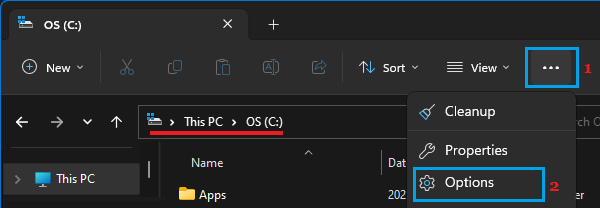
If you are using Windows 10, click on the File Tab and select Change Folders and Search options in the menu that appears.
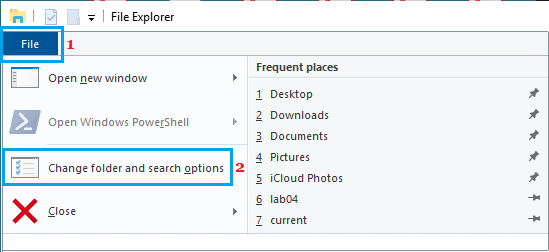
3. On Folder Options screen, switch to the View tab and uncheck Hide Extensions for known file types box.
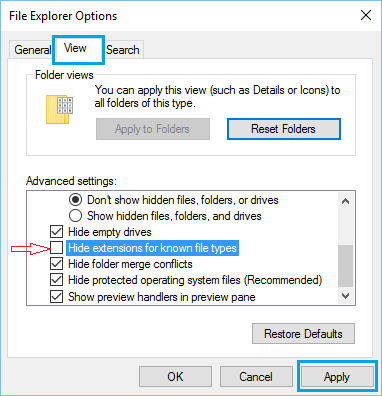
4. Click on Apply and OK to save this change on your computer.
After this, you should find all the files on your computer being clearly displayed with their full file name extensions.
2. Show File Extensions Using Control Panel
If you like using Windows Control Panel, you can follow the steps below to make your computer Show File Extensions.
1. Type Control Panel in the Search bar and click on Control Panel App in the search results.
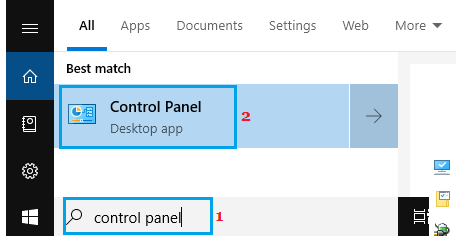
2. On Control Panel Screen, make sure you are in Category View and click on Appearance and Personalization.
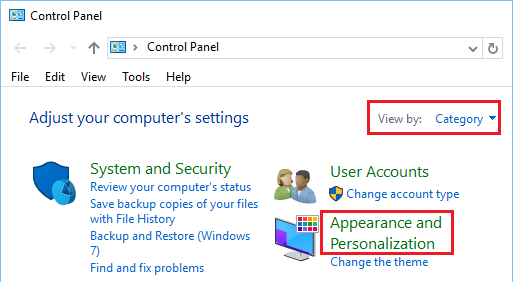
3. On the next screen, click on File Explorer Options.
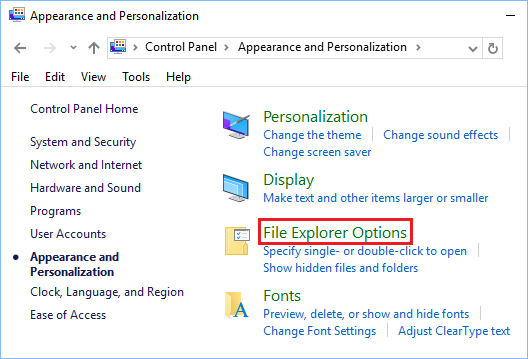
4. On File Explorer Options screen, select the View tab and uncheck Hide Extensions for Known File Types option.

5. Click on Apply and OK to close this screen.